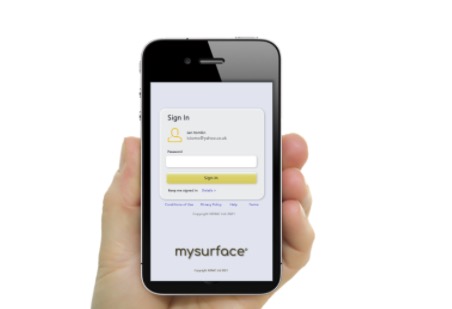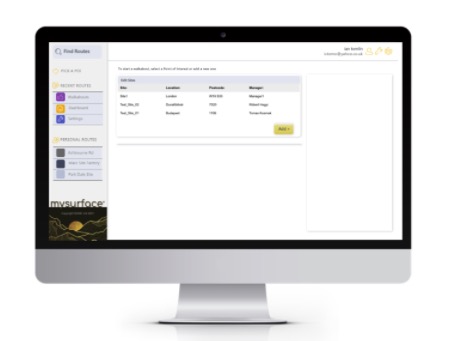How to move your digital transformation agenda forward with low-code
Businesses around the world are looking to seize opportunities that the digital era brings. Online communities offer new potential to create wealth. But how do enterprises harness technologies like big data and the Internet of Things (IoT) to turn data into sustainable value for your business?
Digital Transformation is too big and hairy for IT to be expected to deliver it alone. The problem is, when ‘normal people’ see code on a screen they fee disenfranchised and unable to contribute to software development discussions. This is why low-code digital transformation is the way to go.
Before considering the tooling though, it’s well worth taking a step further back. Considering IT changes without first re-visiting the design and fit of business models can result in limited returns from investments in IT.
‘A business model determines how the created customer value of an enterprise is converted into value for shareholders. The mechanism that discharges this function is sometimes called the ECONOMIC ENGINE, but fundamentally its about people, process, technology and data.’
Ian Tomlin, CEO – Newton Day
Examples of mobile and web desktop applications designed and deployed on Low-Code digital transformtion platform


It takes leadership to make digital transformation to work, but a low-code digital platform makes results easier to achieve
A low-code digital transformation agenda recognises the key role technology has to play in fashioning results. Using a low-code, or better still ‘no-code’ platform means business stakeholders and system users get to play a key role in software development decisions. It gives EVERY relevant business stakeholder a say in how to turn your business model into technology solutions, most of all the CEO.
When Chief Information Officers or newly appointed Digital Directors get handed the task of ‘making a digital transformation work’ it can prove to be a poisoned chalice. Ultimately, it’s the CEO and not IT leaders that should have the biggest say in what business models should apply to an enterprise, and how best to orchestrate them.
The end-game for CEOs is to build or buy a digital platform and ecosystem that represents the digital interface to customers, suppliers and partners. Within this same ecosystem expect to see technology building blocks to automate business processes, although a fundamental requirement of ecosystems is to make back-office processes more transparent. Companies like Amazon are demonstrating the effectiveness of built-for-purpose digital platforms to pass over data entry duties to customers, removing many of the back-room processes that traditional suppliers continue to fulfil (unsurprisingly, Amazon doesn’t use Salesforce.com to manage its CRM; its own customer ecosystem removes the need for sales teams to key-fill data).
One of the challenges CEOs face is understanding the complexities of modern technology, not just in appreciating the applicability of technology for their business models, but during the design and deployment phase when it’s so important that ‘the business’ drives ‘IT’.
This is driving demand for a new kind of agile Digital Platform development tool-set that removes the technical barriers and risks to authoring the kind of Digital Ecosystem that can fully orchestrate a business model.
Use Encanvas AppFabric to supercharge your Digital Transformation
%
88% of businesses say they are already under-going a digital transformation
%
On average middle-managers spend a quarter of their time searching for information... only to find that 50% of the data they find has no value
%
47% of job categories may be taken over by machines in the next two decades.
%
85% of businesses believe that cloud technology will transform their business or industry
%
On average over 60% of enterprise budget is spent on 'keeping the lights on' technology
%
40% of business managers cite a lack of urgency in the company as the biggest barrier to digital transformation
Source:
1. Altimeter Group Digital Transformation Survey
2. University of Oxford
3. Gartner (2112)
4. Gartner (2112)
5. Oxford Economics and SAP (2012)
6. MIT Sloan Mgmt. Review
What form does this new kind of Digital Transformation Platform take?
There are some obvious features we’ve described here; more in terms of what such an ecosystem needs to do in order to orchestrate business models, rather than a technical list.
Remove coding, running large IT teams, gluing technology together
Platforms need a unifying codeless ‘building block’ approach to development that’s fast and affordable; so you can make mistakes and ‘fail fast’
Harvest your existing data assets – and CLEANSE them to make them useful
Fully leverages your existing data assets and makes light work of cleansing data when you start to put it to work!
Easy to use and produces user friendly (iterative) outcomes on any platform
Modern look and feel – Nobody wants to struggle with old fashioned User Interfaces that people can only access when they’re at their desk’
Brings access to the latest tech innovations
You’d expect to leverage big data, artificial intelligence, IoT, data visualizations, software robots…!
‘Enterprise ready’
It will be running business critical apps so it needs to be resilient, scalable and ultra secure – and it needs to be on the cloud!
‘IT department friendly’
Easy to deploy, easy to learn and use, not at risk of creating legacy issues down the line – even better if your IT team trusted it and liked using it!
Where do CEOs start on their digital transformation?
One might argue that it begins with another look at the current business model. Is the incumbent business model maximizing returns to shareholders from the customer value being generated by the enterprise? Furthermore, is the customer value sufficient to keep the enterprise competitive?
One challenge is working out how to articulate the business model into outcomes, capabilities, processes and mechanisms. One of the things the team at Newton Day helps with are Sprint Workshop programs to get through this ‘recognition of needs’ phase as expediently as possible without compromising on accuracy and detail. It’s essential that enterprises really fundamentally understand who their customers are, what they value and what it takes to deliver results.
Next, a project team and plan has to be constructed.. This should comprise of a blended team of organizational design, HR, risk, legal, IT, marketing, analyst and program management experts. Whether these individuals are contracted in, or are assigned from existing resources, it’s better to measure their contribution as a team and reward it. In my opinion, the best governance model for digital platform projects is to have a regular Project Leadership Group (PLG) of senior execs reporting directly into the board and then support this with a Project Steering Group (PSG).
Once this stage is complete, the work to develop the technology ecosystem begins. This starts with stakeholder workshops and normally, having mapped out the bigger game plan, projects focus on delivering a point of detail; an aspect of the current business model that can be improved that is seen to be a quick win. Gaining early results gives everyone inside and outside the project team confidence in the value of the program.
Now, back to the original point: Can a business expect to do all of this without the CEO leading it? Or, put another way, would a CEO not want to be leading such a strategically important initiative that will be the source of the enterprises income in future years? I would argue not.

About Ian Tomlin
Ian Tomlin is a management consultant and strategist specializing in helping organizational leadership teams to grow by telling their story, designing and orchestrating their business models, and making conversation with customers and communities. He serves on the management team of Encanvas and works as a virtual CMO and board adviser for tech companies in Europe, America and Canada. He can be contacted via his LinkedIn profile or follow him on Twitter.
If you've never seen LIVE WIREFRAME in action...
If you’re not already using a code-less design environment then maybe you should see it for yourself. Why not request a fire-side chat and experience ‘across the desk’ applications design close-up with one of our experienced consultants?
